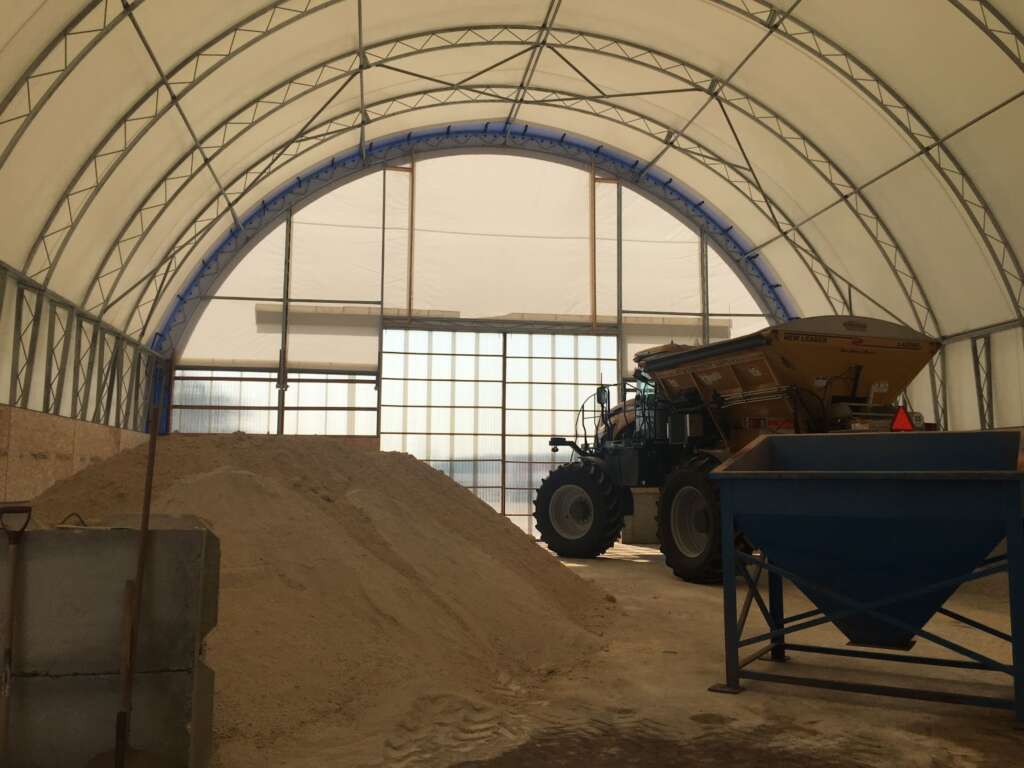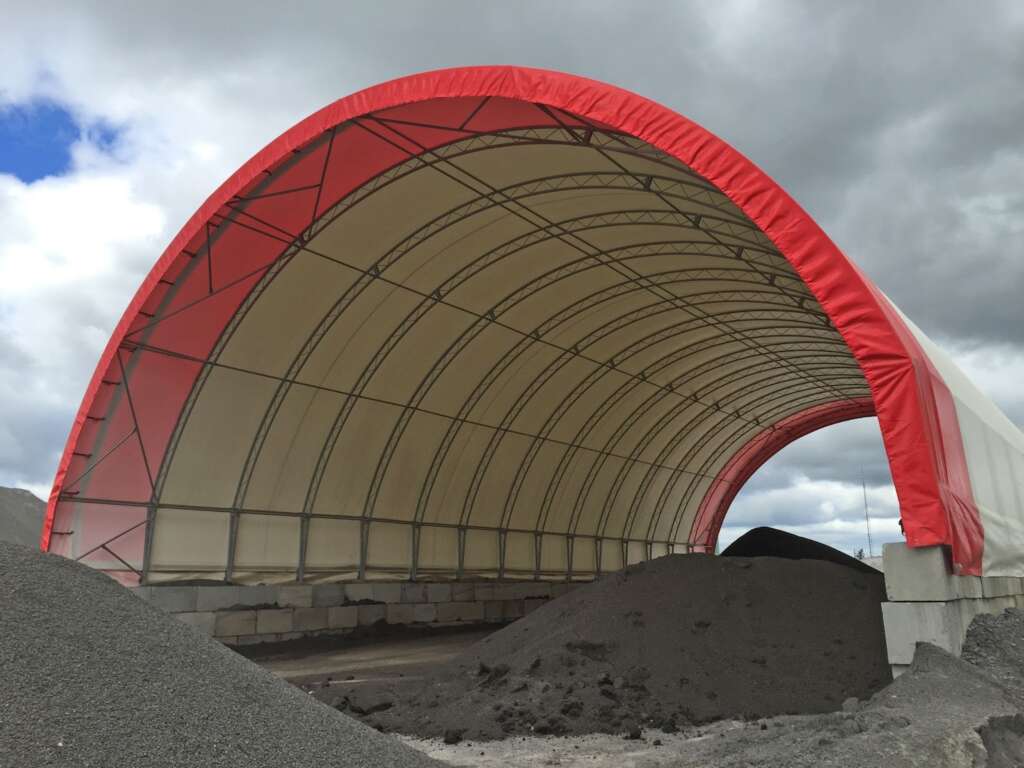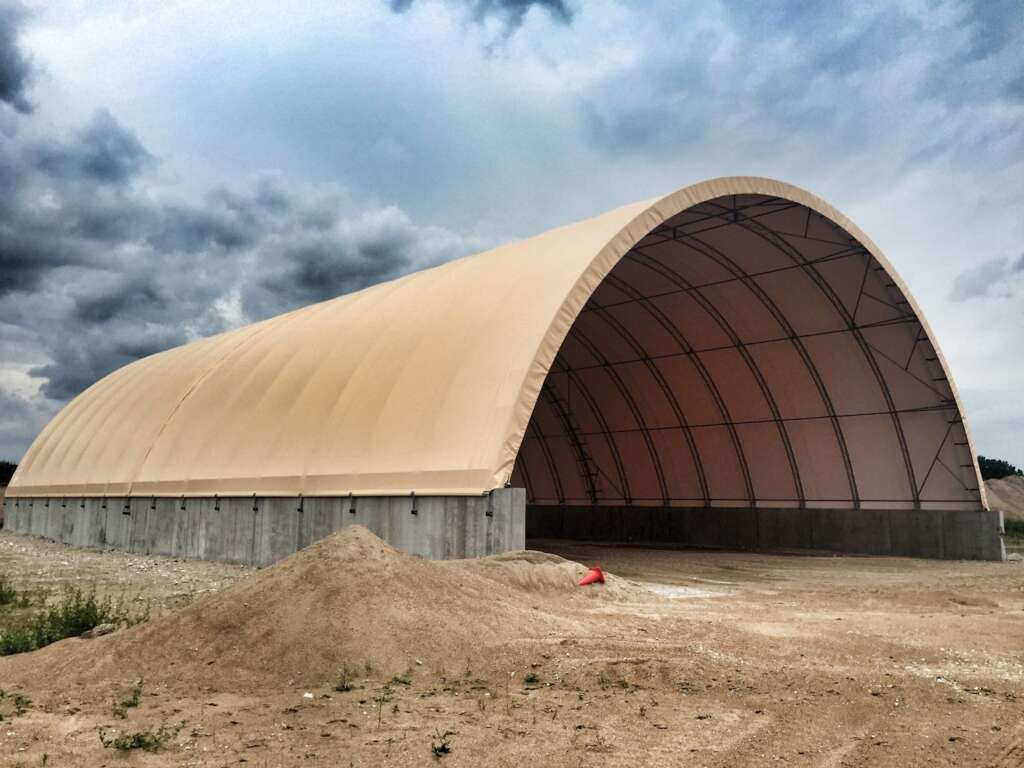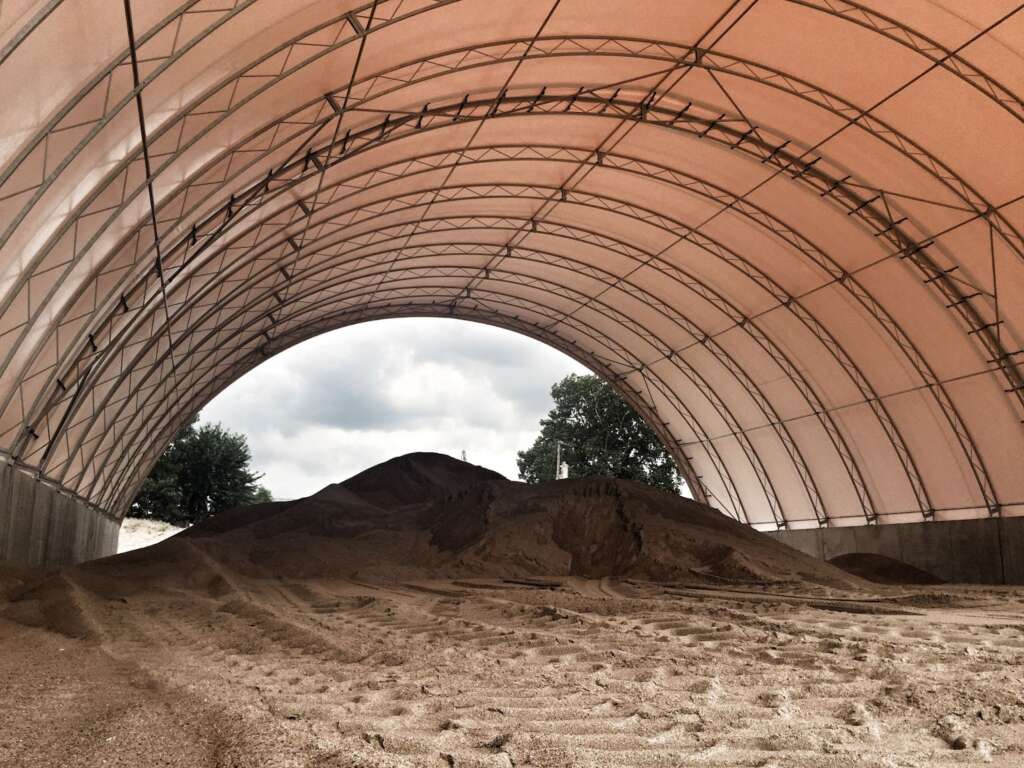When it comes to mining operations, efficiency, durability, and flexibility are non-negotiable. Every decision, from equipment investment to on-site infrastructure, has to make sense from both a performance and a financial standpoint. That’s why more and more mining companies are turning to fabric-covered structuresfor their on-site needs.
These structures aren’t just temporary shelters; they’re engineered solutions designed to withstand harsh environments, protect valuable equipment, and keep operations running smoothly, no matter the weather or location.
In this blog, we’ll break down why fabric-covered structures are a smart, cost-effective, and sustainable choicefor the mining industry.

1. Built for Harsh Mining Environments
Mining sites are rarely in ideal locations. From open-pit mines in remote areas to operations deep in the mountains, conditions are often extreme, dusty, cold, wet, or all of the above.
Fabric-covered structures are designed to thrive where traditional buildings struggle. With heavy-duty galvanized steel frames and durable, UV-resistant fabric, these structures can withstand high winds, snow loads, and corrosive conditions often found in mining regions.
Unlike conventional steel or wood buildings that can deteriorate quickly in these environments, fabric structures resist corrosion and can be easily cleaned, ensuring long-term performance even in the toughest conditions.
2. Quick to Install, Easy to Relocate
Time is money in mining, and every day a site sits idle waiting for infrastructure to be built, productivity takes a hit.
Fabric-covered structures can be erected in a fraction of the timeit takes to construct a traditional building. Depending on size and site conditions, many can be installed in just days or weeks rather than months.
Even better? These structures are relocatable. When a mining operation moves or expands, the structure can be disassembled, transported, and reinstalled in a new location with minimal effort. This flexibility makes them a perfect fit for temporary or evolving mining projects where mobility is key.
3. Cost-Effective Construction
Budget efficiency is a huge advantage of fabric-covered buildings. Traditional construction involves expensive materials, labor, and long project timelines that add up quickly.
Fabric structures, on the other hand, require fewer materials and less labor, resulting in significantly lower upfront costs. Their modular design allows for scalable construction, meaning you can start small and expand as your operation grows without major disruption.
Additionally, the natural lighting and temperature control benefits (more on that next) help reduce operational costsover time, making these structures a win for both capital and operating budgets.
4. Natural Light, Energy Savings, and Conditions
One of the standout benefits of fabric-covered structures is their translucent material, which allows natural daylight to flood the interior.
This eliminates the need for artificial lighting during the day, cutting down on energy consumption, and creates a bright, open workspace that improves employee safety and morale.
Fabric buildings also offer excellent ventilation and temperature regulation, keeping interiors cooler in the summer and warmer in the winter. This creates a comfortable environment for workers and equipment alike, without relying heavily on costly HVAC systems.
5. Protection for Equipment, Materials, and Staff
Mining operations rely on expensive equipment, excavators, trucks, and processing systems that need reliable protection from the elements.
Fabric-covered structures provide versatile shelter solutionsfor:
- Heavy equipment storage
- Mine opening coverage
- Workshops or maintenance facilities
- Material storage
- Crew housing or break areas
Because they’re fully customizable, you can design your structure to fit your specific needs, whether that’s a massive clear-span building for machinery or a smaller enclosure for supplies. The wide-open interior design, without internal support beams, also maximizes usable space for easy movement and efficient workflows.

6. Environmentally Friendly and Sustainable
The mining industry is under increasing pressure to adopt more sustainable practices, and infrastructure is no exception.
Fabric-covered structures have a smaller environmental footprintcompared to traditional buildings. Their lightweight materials require less heavy machinery for installation, reducing emissions during construction.
Additionally, the structures can be reused or relocated rather than demolished, helping reduce waste. Many of the materials, such as the steel frame and fabric membrane, are recyclable at the end of their lifespan, making this an eco-conscious investment that aligns with sustainability goals.
7. Customizable to Fit Any Site or Purpose
No two mining operations are alike, and that’s exactly why customization matters.
Fabric-covered structures can be designed in virtually any size or shape to meet your operation’s unique needs. Whether you need a compact shelterfor small equipment or a massive structure for large-scale processing and storage, these buildings are fully scalable and configurable.
You can also add features like:
- Ventilation systems
- Insulation and heating options
- Doors and entryways for large machinery
- Lighting and electrical systems
- Foundation customization for site terrain
The adaptability of fabric structures means they can serve multiple purposes throughout the lifespan of your mining project.
8. Low Maintenance and Long Lifespan
Fabric-covered structures are engineered to last for decades with minimal maintenance.
The high-tensile fabric membranes are resistant to tearing, UV degradation, and mold growth, while the galvanized steel framework provides exceptional strength and corrosion resistance.
Routine inspections and simple maintenance, like cleaning the fabric or checking tension, are typically all that’s required to keep your structure performing at its best. This translates to fewer maintenance costs and less downtime compared to traditional buildings.
9. Enhanced Safety for Crews and Equipment
Safety is a top priority in mining, and fabric structures support that mission.
The open, bright interiors reduce visibility issues, and the absence of internal beams minimizes collision hazards for vehicles and machinery. Non-conductive materials can also reduce electrical risks in specific applications.
When paired with proper ventilation and dust control systems, fabric-covered structures can even help improve air quality and overall working conditions, supporting healthier and more productive teams.

10. Proven Performance in the Mining Industry
Across North America and beyond, fabric-covered structures have become a trusted solution for mining operations of all sizes.
They’ve been successfully used to cover mine portals, protect stockpiles, house processing equipment, and create secure workspaces in challenging environments. The proven durability and adaptability make them a smart investmentthat pays off in both the short and long term.
Q&A: What People Are Asking
Q: Are fabric-covered structures considered temporary or permanent?
A: They can be either! Many fabric buildings are engineered to meet local building codes for permanent use but can also be dismantled and relocated for temporary or semi-permanent applications.
Q: How long do fabric-covered structures last?
A: With proper maintenance, high-quality fabric structures can last 20–30 years or more. The steel frame often outlasts the fabric itself, and replacement membranes can be installed easily when needed.
Q: Can they withstand snow, wind, and extreme weather?
A: Absolutely. GGS fabric-covered structures are designed to meet site-specific load requirements and withstand extreme weather conditions common in mining environments.
Q: Can I customize the size and features of my structure?
A: Yes, fabric-covered structures are highly customizable. You can choose everything from the building dimensions to door placement, insulation, and ventilation features.
Q: What are fabric-covered structures used for in mining operations?
A: Fabric-covered structures are versatile sheltersused to protect equipment, cover mine openings, store materials, house workshops, and provide safe spaces for staff. They offer a flexible, cost-effective alternative to traditional buildings.
Q: How long does a fabric-covered structure last on a mining site?
A: With proper maintenance, high-quality fabric structures can last 20–30 years. The steel frame is extremely durable, and the fabric membrane can be replaced when needed, extending the structure’s overall lifespan.
Q: Can fabric-covered buildings withstand harsh mining environments?
A: Yes. These structures are designed to endure extreme weather, including heavy snow, high winds, dust, and UV exposure. Their steel framework and reinforced fabric make them suitable for rugged, remote mining sites.
Q: Are fabric-covered structures permanent or temporary?
A: They can be both. Many fabric buildings meet local building codes for permanent use, but they can also be disassembled, relocated, and reinstalled, making them ideal for temporary or evolving mining projects.
Q: How quickly can a fabric-covered structure be installed?
A: Installation is fast compared to traditional construction. Many structures can be erected in just days or weeks, depending on size and site conditions, which helps mining operations minimize downtime.
Q: Can these structures be customized for specific mining needs?
A: Absolutely. Fabric-covered structures are fully customizable in size, shape, door placement, ventilation, insulation, and additional features, allowing them to adapt to any mining operation’s requirements.
Q: Do fabric structures help reduce operational costs?
A: Yes. Fabric structures are energy-efficient due to natural lighting, ventilation, and insulation options. They require less material and labor to construct and have low maintenance needs, which helps reduce both capital and operational expenses.

The Smart, Flexible Choice for Modern Mining
At the end of the day, fabric-covered structures deliver the versatility, protection, and cost-efficiencymining operations need to stay productive and competitive.
Whether you’re covering your mine opening, safeguarding your heavy equipment, or providing shelter for your crew, these structures are built to adapt, endure, and perform, wherever the job takes you.
Ready to design your next structure?
Contact GGS to learn how our fabric-covered building solutionscan optimize your mining site for productivity, safety, and sustainability.

